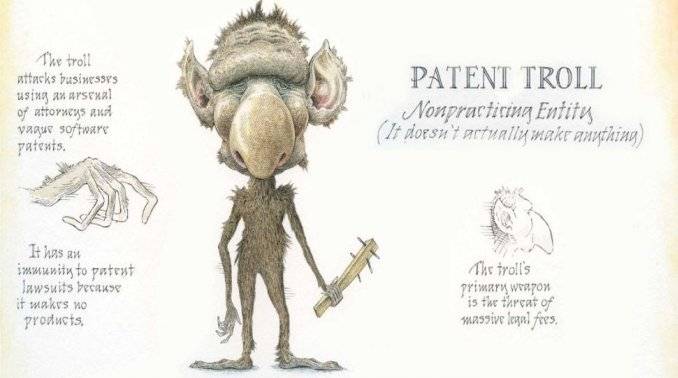This post was first published on March 9th, 2012.
Patent Trolling is indeed a remunerative fad apart from being a ‘rage’. It’s also turning out to be the easiest way to make quick bucks, many of those quick bucks rather. For once, it should probably be lauded for they have highlighted the largest of loopholes that companies seem to have over-looked on their march to success. However, what should also be observed in the midst of all of this is that – they also highlighted what a travesty the patent system has become these days. The company that does nothing gets rich and the company that innovates has slowed down. Especially, when all you need to do is find descriptions of an invention that dates back to before the patent was filed.
The problem is that – searching for old inventions is really difficult. If ‘all you need to do’ is find prior art, does the court case automatically disappear in a jiffy? It would be wonderful were that the case. But realities are relative.
The problem is that – searching for old inventions is really difficult. If ‘all you need to do’ is find prior art, does the court case automatically disappear in a jiffy? It would be wonderful were that the case. But realities are relative.
Probably the most famous patent-troll case in recent years was the one where a troll named NTP managed to extract $612.5 million from Research in Motion. That case covered five different patents: of the five, the U.S. Patent Office had given “non-final” rejections to all of them and had issued a final rejection to one, when the case was settled. RIM had discovered prior art for all of the patents that NTP was suing over — but that didn’t really help them at all. The problem was that the patents had already been awarded to NTP, which meant that NTP was within its rights to sue RIM for as long as it held those patents. Once RIM found out what NTP was up to, it could and did challenge the patents at the U.S. Patent Office, which has a procedure for such things. But since the U.S. Patent Office is an entirely separate entity from the U.S. District Court, where the Judge made it very clear that his job was to rule only on whether RIM was violating NTP’s patents, and not on whether NTP’s patents were properly granted. Had RIM not settled the case, the court could and probably would have shut down the entire BlackBerry service. RIM, of course, offered to post a substantially greater settlement if it could get the money back if NTP’s patents were deemed invalid; NTP, naturally, rejected that offer. And challenging patents at the U.S. Patent Office takes time; if you’ve already been sued by a patent troll in U.S. District Court or just about anywhere else, it’s almost certainly too late at that point to look for prior art, take it to the USPTO, get the patent invalidated, and win the case that way. Meanwhile, RIM has settled its patent suit with NTP by paying the company $612.5 million to settle all the claims against it, and for a full license of NTP’s patents. Certainly, RIM is glad to get this behind it, also noting today that the uncertainty of the case’s outcome will hit the current quarter’s earnings. The license covers all of NTP’s patents, and puts not only RIM but also its carrier and device partners in the clear.
While the court case against RIM has been dismissed, the one thing that nobody’s talking about is what will happen should the Patent Office finally reject all of NTP’s patents and its appeals prove fruitless, does RIM gets its $600 million back and an apology?
Wall Street Journal is one of the few who actually found out about what happens down the road and has updated the link above to say there is no contingency for return payments or a new lawsuit, should the USPTO eventually find the patents invalid –as it appears to be increasingly likely. In fact, RIM’s would have paid more to have such a contingency, but it appears NTP wasn’t interested, suggesting that even they know how weak their stance is on these patents. The overall deal may have made business sense in the end for RIM whose stock is way up, and whose sales will likely improve without the uncertainty over its head. But the fact remains that RIM was forced to settle the claim before the USPTO could invalidate NTP’s patents.
It is true that it’s impossible to keep tabs on every patent awarded to a possible troll, and try to challenge those patents at the USPTO on the off chance that if you don’t, those patents might be used against you!
Contributed by: Valli Shobhana. C
Contributed by: Valli Shobhana. C




0 Comments
patent litigation
Although I recognize the inefficiency problem that the “patent troll” business model creates within the economy, nevertheless the NPE model is profitable, effective, and a legal exercise of IP rights. The problem is a systemic one; when NPEs win, on average, two to three times the damage awards that practicing entities reap from patent litigation, you can’t blame them for suing as much as possible. It seems to me that one of the best ways to combat the NPE problem is to disincentivize them by reducing their potential winnings from enforcement action. So far, however, only a few courts seem to have taken the reasonable-royalty approach.